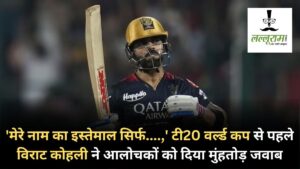Without a sight display like in cricket, a hockey goalkeeper’s largest weapon is eyesight
5 min readOf the numerous issues PR Sreejesh would’ve anticipated earlier than he joined the nationwide workforce set-up practically 20 years in the past, a check for color blindness should not have been one in every of them.
And but, one in every of India’s finest hockey goalkeepers of all time was made to sit down on an ophthalmic chair, recognising designs and shapes, and get examined for – amongst many issues – color blindness.
“Many players realised they had a number when they came to the national camp,” former India goalkeeper Adrian D’Souza says. “So, we would all have our eye tests done. They did an in-depth test for goalkeepers because we had to see much more clearly than an average hockey player. I did it, Sreejesh did it… we used to get marked on the basis of that.”
D’Souza doesn’t keep in mind their scores. But given how sharply Sreejesh’s eyes choose the fast-moving ball even as we speak, on the age of 34, it should have been with flying colors.
He may not have to sit down via the tedious eye assessments nowadays, however each time he steps on the pitch – be it for coaching or a match – Sreejesh could be seen juggling two balls, standing in a triangle with different goalkeepers and throwing a ball with one hand whereas concurrently catching with the opposite, or just standing in entrance of a wall with one other individual standing behind his shoulders, bouncing tennis balls off it with Sreejesh utilizing his reflexes to catch them.
PR Sreejesh trains with glow lights to enhance his hand-eye coordination. (Photo credit: Mihir Vasavda)
Not simply Sreejesh. Almost each goalkeeper goes via these drills to heat up their most vital muscle earlier than taking place between the posts. “As a goalie,” India’s goalkeeping coach Dennis van de Pol says, “your eyes are your most powerful weapon. If you really read where the ball is coming (from), then it’s so much easier.”
Hockey is a peculiar sport, in that the goalkeeper doesn’t have the benefit of a sight display that makes it straightforward to identify the ball for a batsman or a wicketkeeper in cricket. Neither is the dimensions of the ball that large, in contrast to a soccer, that may make his job simpler. Through his helmet, a goalkeeper has to learn the trajectory of the ball and get in the best place to cease it from entering into.
Colours, glare
It may sound a reasonably easy factor however as former Malaysia goalkeeper Kumar Subramaniam, who’s now part of the workforce’s teaching workers, says, it’s laden with challenges. “Especially during the night games, there are issues because of the glare,” he says.
Once, on the Azlan Shah Cup in Ipoh, the lights felt so vivid that Subramaniam couldn’t even spot the ball. And so, he began specializing in every part that occurred at his eye stage. “If you look at an aerial ball, for example, and glance at the lights, chances are you might be blinded. Even if that lasts for a second, it can get risky. So, I avoided looking up and for aerial balls, I used to take a look at the flight of the ball, read its trajectory and shift my focus on that part of the field,” Subramaniam says.
Now a goalkeeping coach, one in every of his first items of recommendation to younger custodians is to get their eyes examined for glare and color blindness to identify the white or yellow color ball in addition to differentiate between the opponent’s shirt colors in addition to his personal workforce’s.
D’Souza says the goalkeepers get examined for each, their lengthy in addition to brief imaginative and prescient. “Long distance would go beyond 100 yards, just to see how far you can see. At such a distance, you of course can’t see the ball but what you are watching is the movement,” he says.
Dealing with deflections
The short-distance imaginative and prescient assumes much more significance now, given how actively the forwards are in search of deflections contained in the circle. “Most goals these days are scored by deflection,” D’Souza says. “It means your eyes have seen something to which your body is reacting. But suddenly, there’s a change.”
And so, for months, Van de Pol has been making ready the Indian goalkeepers to cope with such deflections, which frequently come from contained in the 6 metre space close to the goalpost. The Dutchman cites the instance of his compatriot Jaap Stockmann, a Netherlands goalkeeping nice, who ‘was like a statue’ within the aim.
Before the World Cup, throughout nationwide camp at SAI Centre in Bangalore, India’s goalkeeping coach Dennis van de Pol skilled Indian custodians to cope with close-range deflections utilizing boards.(Photo credit: Mihir Vasavda)
“Because the ball travels so fast, a lot of goalies move into a position even before the shot, anticipating the direction in which it’ll be hit. What ends up happening is they have to make two moves then to get into the right position,” Van de Pol says.
What set Stockmann other than the remainder is he would wait till the ball would launch from the stick earlier than making his transfer. Among the up to date goalkeepers, Belgium’s Vincent Vanasch comes closest to the statue-like Stockmann.
Van de Pol’s major intention has been to make the Indian goalies affected person. During coaching camps, he held particular classes after common coaching when Van de Pol saved deflection boards on the left, proper and in entrance of a goalkeeper. He’d then hit the ball from the highest of the ‘D’. The problem for the goalkeepers was to withstand the temptation to maneuver instantly after the primary shot, and wait till the ball would deflect off the board, which was some 3 or 4m away from them.
“It’s a enjoyable factor to work with. What separates a high goalie, the all-time who lived from a superb goalie is that they make it look really easy – an unbelievable shot from the highest of the ‘D’, they usually reserve it similar to that. Boom! Or a deflection from shut vary, and they’re there.
That is so demotivating for the striker,” van de Pol says. “And that’s just because of one thing – their vision is sharp and their eyes are fixed on the ball.”






